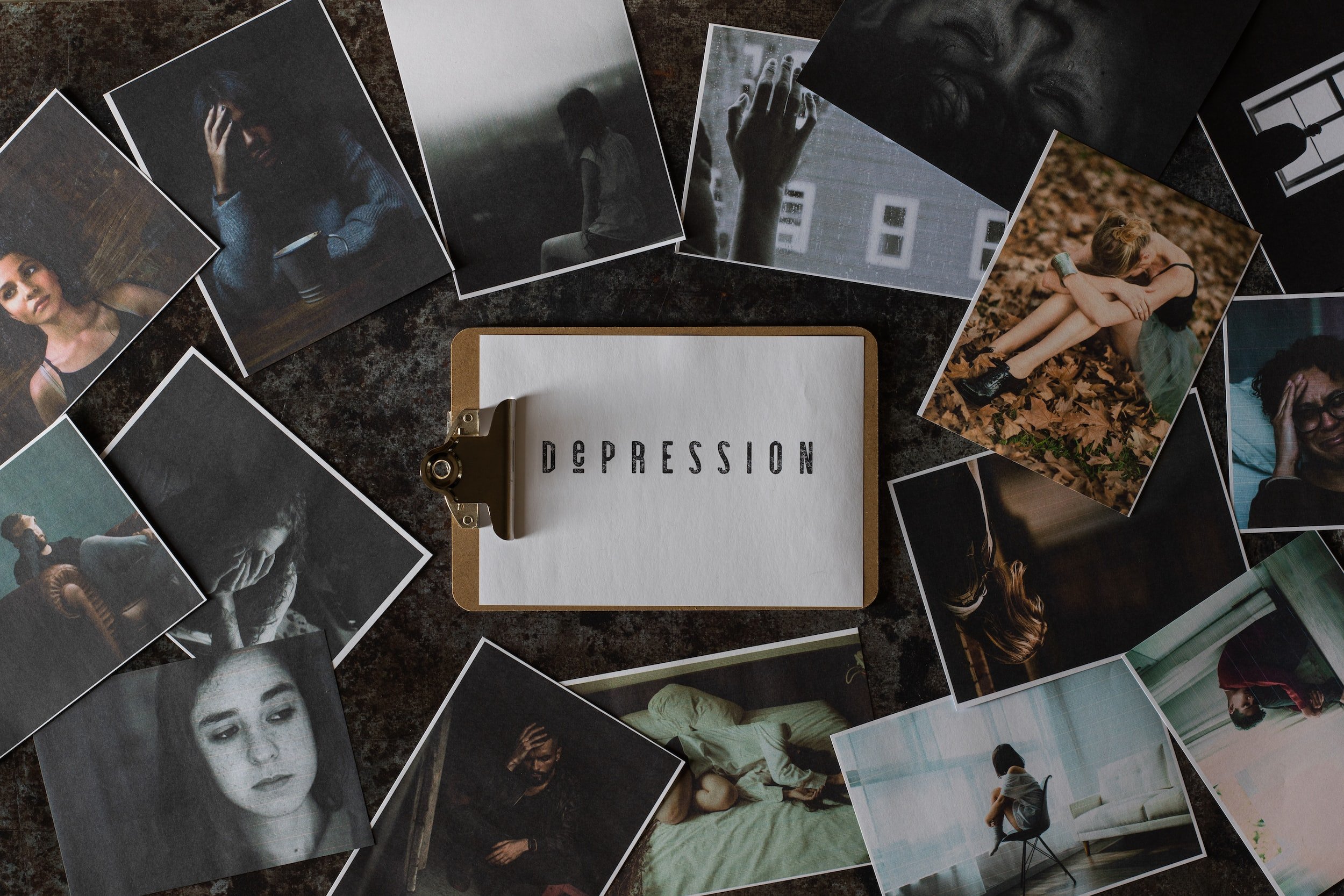
What is ketamine treatment?
At Hello Mental Health, we are committed to staying up-to-date on the latest advancements in mental health treatment. One emerging therapy that has been gaining attention is ketamine integration therapy.
Ketamine is a powerful anesthetic drug that has been used in medical settings for decades. More recently, it has been found to have potential benefits for treating mental health disorders such as depression, anxiety, and PTSD. In 2013 a derivative of Ketamine, Esketamine, was approved by the FDA as a therapy for treatment resistant depression. When administered in a controlled setting by a trained medical professional, ketamine can help alleviate symptoms quickly and effectively.
Ketamine works by blocking a receptor in the brain called the NMDA receptor, which is involved in regulating mood and other cognitive processes. This leads to an increase in the release of neurotransmitters such as glutamate and GABA, which in turn leads to changes in brain activity that can improve mood. Additionally, ketamine can also increase the release of brain-derived neurotrophic factor (BDNF), which supports the growth and survival of new neurons in the brain.
There are multiple routes of administering ketamine including oral, nasal, intramuscular, and intravenous. Intravenous infusions provide the highest bioavailability of the medication meaning that the dosage is easily controlled by a medical professional, patients receive 100% of the medication administered, the effects are rapid, and if a patient has an adverse reaction the treatment can be stopped immediately.
What are ketamine integration sessions?
At Hello Mental Health we offer ketamine integration sessions- a form of psychotherapy that takes place within 24-48 hours of ketamine infusions. Our partners at The Anderson Clinic provide medically supervised ketamine infusions. One of the most significant factors contributing to the immediate changes people experience after IV ketamine therapy is the rapid onset of its effects. Unlike traditional antidepressants, which can take weeks or even months to begin working, ketamine can start to work within hours or even minutes after administration. This rapid onset of action can provide immediate relief from symptoms and when combined with psychotherapy patients can maximize the impact of ketamine treatment and lay the groundwork for lasting change.
Shift in perspective:
IV ketamine also been shown to induce a shift in perspective or a change in mindset. This shift in perspective can help people see their problems in a new light, which can lead to greater insight and self-awareness. This increased self-awareness can make it easier for people to identify and change patterns of behavior that may be contributing to their mental health symptoms.
Increased motivation:
In addition to providing immediate relief from symptoms, IV ketamine therapy has also been shown to increase motivation and energy levels. This increase in motivation can make it easier for people to make positive changes in their lives, such as engaging in self-care activities, seeking therapy, or making lifestyle changes.
Enhanced therapeutic effects:
IV ketamine therapy can enhance the therapeutic effects of other treatments, such as therapy or medication. By reducing symptoms and improving mood, IV ketamine therapy can make it easier for people to engage in therapy and make progress in their treatment.
Improved mood and cognitive function:
IV ketamine therapy has been shown to improve mood and cognitive function, including memory, attention, and executive function. This improvement in cognitive function can help people think more clearly and make better decisions, which can lead to positive changes in their lives.
Have more questions?
Contact us if you have more questions. Or read more about what types of mental health problens that ketamine assisted therapy can help with.
We are thrilled to partner with The Anderson Clinic, a cutting-edge treatment facility located in Cincinnati, Ohio. The Anderson Clinic was founded in 2009 by Dr. Teresa Anderson and was the first psychiatrist-based ketamine clinic in the state of Ohio. The team at the Anderson Clinic specialize in intravenous ketamine infusions and PrTMS.
One important aspect of ketamine therapy is the route of administration. There are several different ways that ketamine can be administered, each with its own benefits and drawbacks. At Hello Mental Health we are committed to providing the safest and most effective treatment options to our clients.
Intravenous (IV) Ketamine
IV ketamine is the most well-established and researched route of administration for ketamine therapy. In this method, ketamine is administered directly into the bloodstream through a vein. IV ketamine therapy typically takes place in a medical setting, such as a hospital or clinic, and is closely monitored by medical professionals. This method is fast-acting and can produce results in as little as a few hours. Because the medication is administered intravenously there is 100% bioavailability meaning that patients receive 100% of the medication. It can also be discontinued quickly in the case of adverse side effects and the dosage can be increased or decreased during an infusion based on the patient’s response. However, it also requires medical supervision and can be more costly. This is the only route of administration used at the Anderson Clinic due to its safety and efficacy.
The Anderson Clinic
-
Sublingual ketamine involves placing a small tablet or lozenge containing ketamine under the tongue to dissolve. This method is convenient and can be self-administered at home. It also tends to have fewer side effects than other methods of administration. However, it may take longer to take effect and may not be as potent as other methods. Sublingual ketamine also has lower bioavailability (30%) than IV Ketamine and once the medication is administered the dosage cannot be adjusted in the case of adverse side effects.
-
Intranasal ketamine involves spraying a mist containing ketamine into the nostrils. This method is less invasive than IV ketamine and can be self-administered at home. It also tends to have fewer side effects than other methods. However, it may not be as potent as IV ketamine and may take longer to take effect. Intranasal ketamine also has lower bioavailability (25-50%) than IV Ketamine and once the medication is administered the dosage cannot be adjusted in the case of adverse side effects.
-
Oral ketamine involves taking a pill or capsule containing ketamine by mouth. This method is convenient and can be self-administered at home. However, it tends to be less potent than other methods and may have more side effects, such as nausea and vomiting. Oral ketamine also has lower bioavailability (16-24%) than IV Ketamine and once the medication is administered the dosage cannot be adjusted in the case of adverse side effects.
-
IM ketamine involves injecting the drug into a muscle, typically in the thigh or buttocks. This method is less invasive than IV ketamine and can be administered in an outpatient setting, such as a doctor's office or clinic. IM ketamine also tends to have fewer side effects than IV ketamine, such as nausea or dizziness. However, it may take longer to take effect and may not be as potent as IV ketamine. IM ketamine has lower slightly bioavailability (93%) than IV ketamine and once the medication is administered the dosage cannot be adjusted in the case of adverse side effects.
Ketamine infusions might be helpful if…
Low IV doses of ketamine offer rapid from mental health conditions, including, but not limited to;
Anxiety
Depression
Postpartum Depression
Bipolar Disorder
Obsessive-Compulsive Disorder
Post-Traumatic Stress Disorder
Substance Abuse
It is worth noting that IV ketamine is not a first-line treatment for mental health conditions and should only be considered after other treatments have been tried and failed. IV ketamine is also not appropriate for everyone and should only be administered under the supervision of a trained healthcare provider.
While you may notice a reduction in symptoms after just one treatment, in most cases, six sessions over a 2-3 week period with occasional follow-up appointments are needed to achieve optimal results.
IV ketamine has shown promise in treating individuals who have not responded well to other treatments for depression, anxiety, PTSD, and substance abuse. It is particularly effective for individuals who experience suicidal ideation or have a history of suicide attempts.
Research has shown that IV ketamine can rapidly improve symptoms of depression and anxiety, with some individuals experiencing relief within hours of receiving the treatment. This is in contrast to traditional antidepressants, which can take several weeks or even months to start working.
IV ketamine has also been shown to be effective for individuals with treatment-resistant depression, which is a form of depression that does not respond to traditional treatments such as antidepressants or psychotherapy. Studies have shown that up to 70% of individuals with treatment-resistant depression experience significant improvement in their symptoms after receiving IV ketamine.
IV ketamine has also shown promise in treating individuals with PTSD. Studies have shown that IV ketamine can help reduce symptoms of hyperarousal, avoidance, and re-experiencing in individuals with PTSD. It is important to note that IV ketamine is not a cure for PTSD, but rather a treatment that can help manage symptoms.
Ketamine Integration Therapists
If you are interested in learning more about ketamine integration therapy or any of our other services, we invite you to reach out to us. We are passionate about helping people live their best lives and are committed to providing compassionate and effective mental health care.




